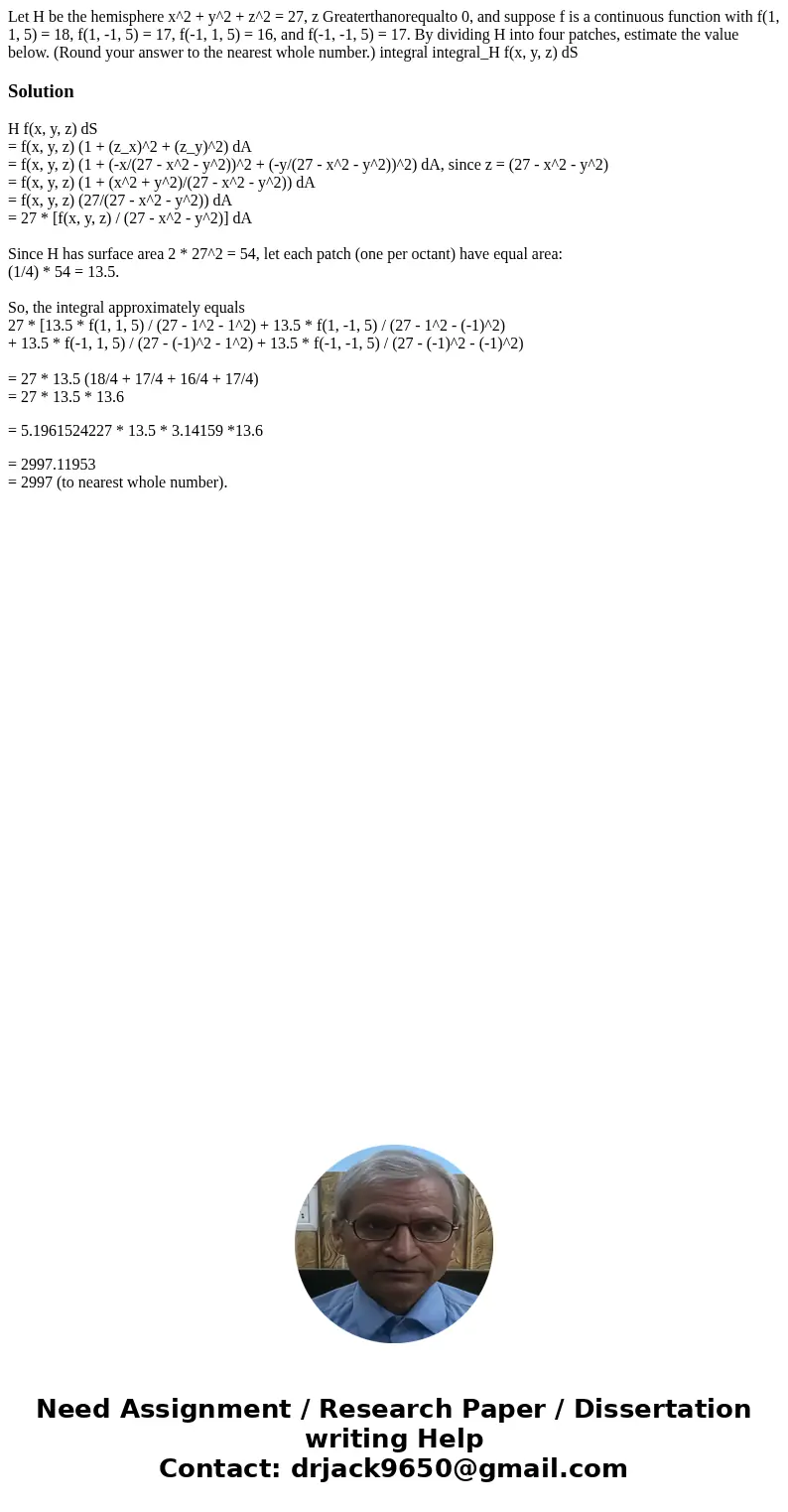Let H be the hemisphere x2 y2 z2 27 z Greaterthanorequalt
Solution
H f(x, y, z) dS
= f(x, y, z) (1 + (z_x)^2 + (z_y)^2) dA
= f(x, y, z) (1 + (-x/(27 - x^2 - y^2))^2 + (-y/(27 - x^2 - y^2))^2) dA, since z = (27 - x^2 - y^2)
= f(x, y, z) (1 + (x^2 + y^2)/(27 - x^2 - y^2)) dA
= f(x, y, z) (27/(27 - x^2 - y^2)) dA
= 27 * [f(x, y, z) / (27 - x^2 - y^2)] dA
Since H has surface area 2 * 27^2 = 54, let each patch (one per octant) have equal area:
(1/4) * 54 = 13.5.
So, the integral approximately equals
27 * [13.5 * f(1, 1, 5) / (27 - 1^2 - 1^2) + 13.5 * f(1, -1, 5) / (27 - 1^2 - (-1)^2)
+ 13.5 * f(-1, 1, 5) / (27 - (-1)^2 - 1^2) + 13.5 * f(-1, -1, 5) / (27 - (-1)^2 - (-1)^2)
= 27 * 13.5 (18/4 + 17/4 + 16/4 + 17/4)
= 27 * 13.5 * 13.6
= 5.1961524227 * 13.5 * 3.14159 *13.6
= 2997.11953
= 2997 (to nearest whole number).

 Homework Sourse
Homework Sourse